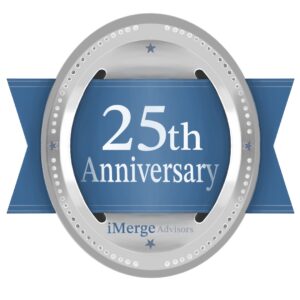What to Tell Key Customers and Partners About a Potential Acquisition
When a potential acquisition is on the horizon, one of the most delicate and strategically important conversations you’ll have is with your key customers and partners. These stakeholders often hold the power to influence the success—or failure—of a transaction, especially when their consent is required for contract assignments or when their continued loyalty is critical to the deal’s valuation.
Handled well, these conversations can reinforce trust, preserve enterprise value, and even accelerate post-close integration. Mishandled, they can trigger uncertainty, churn, or even derail the deal entirely.
This article outlines how to approach these discussions with clarity, confidence, and strategic foresight—drawing on lessons from successful software and technology M&A transactions.
Why These Conversations Matter
In many SaaS and enterprise software deals, customer contracts include anti-assignment clauses. These provisions require the customer’s consent before the contract can be transferred to a new owner. Even when consent isn’t legally required, customers may sense change is coming—especially if they notice shifts in service, personnel, or communication patterns.
From a buyer’s perspective, customer retention is a key driver of valuation. As we’ve discussed in SaaS Key Performance Metrics (KPIs) and Valuation Multiples, metrics like net revenue retention (NRR) and churn directly impact deal multiples. If a top customer gets spooked and walks, it can materially affect the purchase price—or even trigger a renegotiation of terms.
When to Communicate
Timing is everything. Premature disclosure can create unnecessary risk, while waiting too long can erode trust. A good rule of thumb: initiate conversations with key customers and partners after signing the Letter of Intent (LOI), but before finalizing the purchase agreement—especially if their consent is required.
At this stage, the deal is sufficiently advanced to justify the conversation, but still flexible enough to address any concerns that arise. In some cases, buyers may even request that customer consents be secured as a condition to closing.
What to Say: A Strategic Messaging Framework
Here’s a framework we often use at iMerge when advising software founders on customer communications during M&A:
1. Lead with Stability and Continuity
- Reassure customers that the acquisition will not disrupt their service, support, or pricing.
- Emphasize that the acquiring company values the relationship and is committed to continuity.
- Where possible, highlight that the same team will continue to support them post-close.
2. Frame the Acquisition as a Value-Add
- Position the transaction as a strategic move that will enhance the product roadmap, support capabilities, or geographic reach.
- For example: “This partnership will allow us to accelerate feature development and expand our support hours globally.”
3. Be Transparent—But Measured
- Share enough to build trust, but avoid over-disclosing sensitive deal terms or timelines.
- Stick to what’s relevant to the customer: how the deal affects their experience, contract, and long-term relationship.
4. Invite Dialogue
- Encourage questions and feedback. This signals respect and helps surface concerns early.
- Assign a point person—ideally someone with an existing relationship—to handle follow-ups.
5. Secure Consent Thoughtfully
- If consent is required, present the request in a way that reinforces mutual benefit and minimizes legal friction.
- Use plain language and offer to walk through the document with them if needed.
Case Example: A Mid-Market SaaS Exit
Consider a $25M ARR vertical SaaS company preparing for acquisition by a private equity-backed platform. Several of its top 10 customers had non-assignable contracts. Rather than wait until the final days of diligence, the CEO—guided by iMerge—scheduled one-on-one calls with each customer shortly after LOI signing.
He framed the acquisition as a growth catalyst, emphasized that their account managers and SLAs would remain unchanged, and offered early access to new features being developed post-close. All customers signed consent letters within two weeks, and the buyer cited this proactive engagement as a key reason for maintaining the original valuation.
What Not to Do
Equally important is knowing what to avoid:
- Don’t surprise them. Customers who hear about the deal through the press or a competitor may feel blindsided.
- Don’t overpromise. Avoid making commitments you can’t guarantee post-close, especially around pricing or roadmap items.
- Don’t delegate too low. These conversations should come from the CEO or a senior executive—not a junior account manager.
Legal and Structural Considerations
From a legal standpoint, the structure of the deal—asset sale vs. stock sale—can influence whether customer consent is required. As we explain in Asset versus Stock Sale, asset sales typically require more third-party consents, while stock sales may allow contracts to remain intact.
Understanding these nuances early can help you plan the right communication strategy and avoid last-minute surprises.
Final Thoughts
Customer and partner communications during an M&A process are not just a legal formality—they’re a strategic lever. When handled with care, they can preserve trust, protect valuation, and pave the way for a smooth transition.
Firms like iMerge specialize in guiding founders through these critical conversations, ensuring that messaging aligns with deal strategy and stakeholder expectations. Whether you’re navigating a strategic exit or preparing for growth capital, proactive communication with your ecosystem is a hallmark of a well-run process.
Founders navigating valuation or deal structuring decisions can benefit from iMerge’s experience in software and tech exits — reach out for guidance tailored to your situation.



